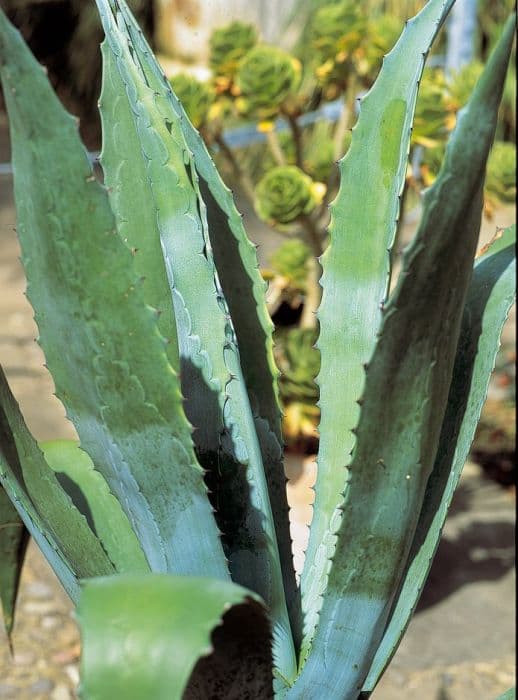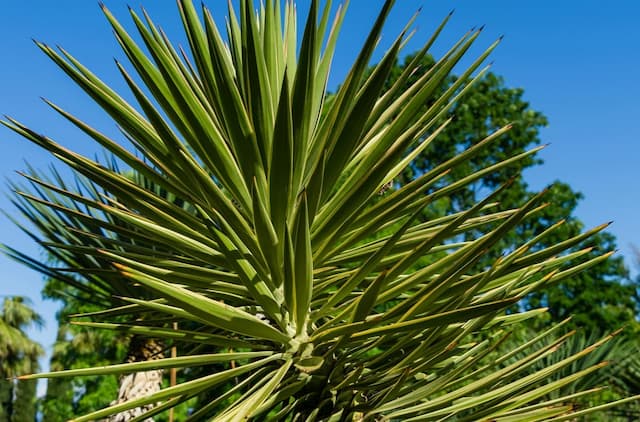Spider ivy 'Vittatum' Chlorophytum comosum 'Vittatum' (v)



ABOUT
Spider ivy 'Vittatum' is a classic spider plant.
The size of the plant is small - 20 inches high and wide. This makes Spider ivy a great indoor plant.
The leaves are thin, bright green, with a broad creamy white stripe down the center. Small white star-shaped flowers form loose inflorescences attached to short stems that also bear small sprouts.
About this plant
 Names
NamesFamily
Asparagaceae
Synonyms
Spider plant, Spider ivy, Ribbon plant, Airplane plant, Hen and chickens, St. Bernard’s lily
Common names
Anthericum comosum, Hartwegia comosa
 Toxicity
ToxicityTo humans
Spider ivy contains chemical compounds said to be related to opium.
Although these compounds are considered non-toxic, they can cause stomach upset, vomiting and diarrhea if ingested.To pets
Cats generally like Spider ivy because it has a mild hallucinogenic effect.
However, according to the ASPCA, the plant is non-toxic to cats, dogs and horses.
 Characteristics
CharacteristicsLife cycle
Perennials
Foliage type
Evergreen
Color of leaves
Green with white lines
Flower color
White
Height
20 inches
Spread
20 inches
Plant type
Herb
Hardiness zones
8
Native area
Southern Africa and Western Australia
Benefits
 General Benefits
General BenefitsThis plant is easy to care for and hard to kill.
It is listed as one of the most common indoor plants.
Also, listed by NASA as a plant that cleans the air well. Medical Properties
Medical PropertiesThe roots of Spider plants have great medicinal value. In Chinese tradition, spider plant roots are used to treat bronchitis, burns and broken bones.
Note that this herb should not be used as a stand-alone treatment. Do not use this plant without consulting your doctor. Air-purifying Qualities
Air-purifying QualitiesThe spider plant was part of the NASA Clean Air Study.
It was the most effective at removing carbon monoxide, formaldehyde, xylene and toluene. Other Uses
Other UsesIn warm climates or during the summer months in colder areas, Spider plants are well suited for use in pots or as groundcovers. The inflorescences will cascade down a wall, creating a fountain effect.
The mottled varieties will add brightness to any shaded areas. It can be used as a border along paths or in front of shrub borders.
It tolerates artificial light well and is therefore an excellent plant for offices and commercial spaces.
Interesting Facts
 Feng Shui
Feng ShuiIt is believed to help relieve stress and improve concentration. Because of its appearance, it is a noticeable reminder of growth and prosperity.
 Zodiac Sign Compitability
Zodiac Sign CompitabilityGEMINI
Spider plant is well known for its adaptability. Bright light, low light, artificial or natural light, Spider plant feels good in a variety of conditions. This plant is ideal for Gemini, who are known for their versatile, expressive and kind nature. Plant Symbolism
Plant SymbolismAccording to some beliefs, this plant symbolizes fertility if hung in the bedroom.
If you hang it in the kitchen, it will bring abundance.
This indoor plant serves as a symbol of renewed connections with others.
 Water
WaterThe plant is not afraid of short periods without watering, because the roots of Spider plant can store moisture. However, too long intervals can cause the plant to dry out.
During the growing season, water about 2 times a week.
In winter, especially if the plant stands in a cool room, watering should be reduced to once a week. Light
LightAlthough it is best suited for chlorophytum on an eastern or western window sill, it can also be grown on a northern window. If there is little light, the striped leaves will simply become monochromatic. If the room is very dark, then the plant can be regularly supplemented with light if desired.
 Temperature
TemperaturePrefers room temperature - 60 - 80 °F during the day and above 55 °F at night.
 Pruning
PruningRemove dead or weak leaves as needed. If the plant becomes too sluggish and sparse, remove the shoots to redirect energy to the main plant.
 Cleaning
CleaningAs needed
 Soil
SoilUse well-drained, universal potting soil with a neutral pH 6.0 - 7.2.
 Repotting
RepottingSpider plants usually need replanting every 2-3 years. You'll know it's time when you see roots protruding from the drainage holes and rising above the soil line.
Repotting should be done in a vein - at the beginning of the growing season. Humidity & Misting
Humidity & MistingIn summer on hot days, it is recommended to moisten the leaves of such a plant with a sprayer, since it prefers high humidity.
Well-drained warm water should be used for this purpose. This will avoid drying of the tips of the leaf plates.
During the winter the chlorophytum does not need to be sprayed. Do it only if the flower is near a working heating device. Suitable locations
Suitable locationsIndoor
All year round
Outdoor
Spider plant can become an outdoor garden plant in warm climates, and in colder climates it is sometimes planted as an outdoor annual.
It can also be planted out only for the summer, and in the winter it can be moved indoors to be cared for as a houseplant until the next season.Hardiness zone
9 - 11 USDA
 Life cycle
Life cycleBecause Spider plant is an herbaceous plant, it propagates and grows very well.
It blooms internally, but the flowers have no beauty. This plant is valuable for its beautiful leaves and the fact that it can be used as an ampel plant. Propogation
PropogationPropogation time
Spring
The spider plant is very easy to propagate. The plant quite actively grows full-fledged small plantlets. Simply separate the plantlet and pot it separately, and it will quickly become a lush spectacular bush.
With proper care and regular watering, the plant takes only 15 days to root.
For successful rooting, it is best to choose a baby bush with long roots.
 Pests
PestsWhitefly, Scale insects, Aphid









